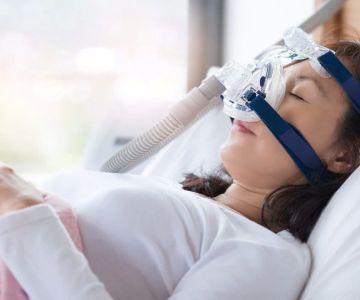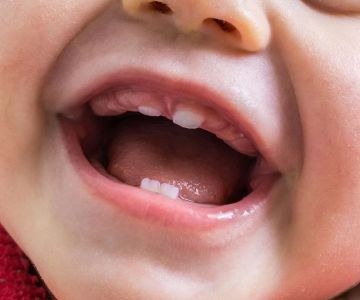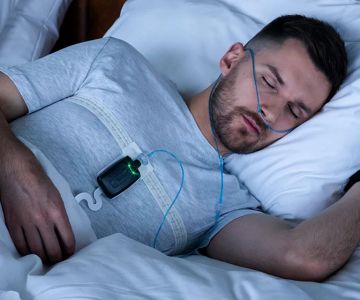What Are Oral Appliances for Sleep Apnea?
Oral appliances for sleep apnea are specialized dental devices or mouthpieces designed to keep your airway open while you sleep. They work by pulling your jaw or tongue forward, creating more space for unobstructed breathing. Healthcare providers often recommend these appliances as a treatment option for obstructive sleep apnea, especially if you can't tolerate or use a CPAP machine.
Types of Oral Appliances
There are two main types of oral appliances commonly used to treat obstructive sleep apnea: mandibular advancement devices (MADs) and tongue-stabilizing devices (TSDs). MADs are the most prevalent and function by moving your lower jaw forward, which also pulls your tongue forward, increasing the space at the back of your throat for better airflow. TSDs, on the other hand, use suction to hold your tongue in a forward position to open the airway. Each type has its unique features and suitability based on individual needs.
The Effectiveness of Oral Appliances
Custom-made oral appliances tend to offer the best results for treating obstructive sleep apnea. While over-the-counter and "boil and bite" models may provide some benefits, research indicates that tailor-made appliances are more effective. The degree of improvement varies from person to person, depending on factors such as the severity of sleep apnea and the shape of the mouth.
Who Are Oral Appliances Best Suited For?
Oral appliances are typically most beneficial for individuals with mild to moderate obstructive sleep apnea who have difficulty using a CPAP machine. CPAP is often considered the gold standard treatment for improving airflow during sleep, but many people find it challenging to use consistently. In such cases, oral appliance therapy can be a viable alternative or complementary treatment. Some people may even combine the use of an oral appliance with a CPAP machine for enhanced results.
Who Shouldn't Use Oral Appliances?
Oral appliances may not be suitable for everyone. People with central sleep apnea, where breathing pauses are caused by signaling problems in the brain, won't benefit from these appliances. Children with breathing issues usually require different treatment approaches, and the use of an oral appliance should only be considered upon the recommendation of a healthcare provider. Additionally, attempting to manage severe obstructive sleep apnea with only an oral appliance can be risky and should be done under the guidance of a healthcare professional.
Procedure Details for Obtaining an Oral Appliance
To obtain an oral appliance for obstructive sleep apnea, a sleep study is necessary for a proper diagnosis. If an oral appliance is deemed appropriate, a referral to a dentist is required. The dentist will take an impression of your teeth or a 3D scan and send it to a manufacturer for a custom-made device. During a follow-up visit, the dentist will ensure a proper fit and provide instructions on cleaning and caring for the appliance. It may take some time to adjust to wearing the appliance, usually around two to four weeks.
Risks and Benefits of Oral Appliance Therapy
Short-term side effects of oral appliance therapy may include increased salivation, jaw and teeth pain, dry mouth, and gum irritation. Long-term side effects, though less common with a well-fitted appliance, can include changes in bite, teeth movement, or issues with the jaw muscles and temporomandibular joint. Regular dental check-ups are essential to monitor for any changes. The benefits of oral appliance therapy include improved symptoms of sleep apnea, reduced snoring, better sleep quality, and the convenience of portability for travel.
Questions to Ask Your Healthcare Provider
It's crucial to have a detailed conversation with your healthcare provider about oral appliance therapy. Some important questions to ask include the cost of the therapy, insurance coverage, the number of visits and sleep tests required, potential side effects to look out for, and the expected lifespan of the device.
Oral appliances for sleep apnea offer a potential solution for those struggling with obstructive sleep apnea, especially when CPAP is not feasible or preferred. Understanding the types, effectiveness, suitability, and associated procedures and risks is essential for making an informed decision. Consult with your healthcare provider to determine if an oral appliance is the right choice for you and your sleep apnea treatment journey.






 Westgate Dental Arts
Westgate Dental Arts Coventry Family Dental
Coventry Family Dental Familia Dental
Familia Dental Dr. Daniel S. Fife, DDS
Dr. Daniel S. Fife, DDS Dentistry At Suburban Square: Michael I. Wollock, DMD
Dentistry At Suburban Square: Michael I. Wollock, DMD Comfort Care Dental
Comfort Care Dental The Importance of Oral Health Education During Pregnancy for a Healthy Pregnancy
The Importance of Oral Health Education During Pregnancy for a Healthy Pregnancy Why Skipping Dental Checkups Can Lead to Bigger Oral Health Problems
Why Skipping Dental Checkups Can Lead to Bigger Oral Health Problems Advantages of Porcelain Dental Restorations
Advantages of Porcelain Dental Restorations Best Tips for Brushing Your Teeth Properly for Healthy Gums: Essential Techniques for Oral Health
Best Tips for Brushing Your Teeth Properly for Healthy Gums: Essential Techniques for Oral Health How Can Diabetes Cause Tooth and Gum Problems? Preventing and Managing Oral Health Issues
How Can Diabetes Cause Tooth and Gum Problems? Preventing and Managing Oral Health Issues Healthy Habits for Promoting Good Oral Health and Hygiene: Tips for a Healthy Smile
Healthy Habits for Promoting Good Oral Health and Hygiene: Tips for a Healthy Smile